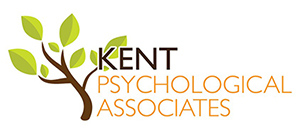 The Gottman Method for couples therapy contributes to more than just a couple’s success. This method for treating couples can be used to strengthen any relationship, including those within the workplace environment. The Sound Relationship House is theory on which this method was developed. The levels of the house are based on over 40 years of research. Through this research, Dr. John Gottman found what leads to happy and successful relationships. The skills involved in promoting healthy relationships are not only useful to those deemed intimate. These strategies are beneficial to all relationships. This is especially true for enhancing workplace cohesiveness. This article will introduce the levels of the Sound Relationship House for couples, and show how it can be used to improve and strengthen relationships in the workplace.
The Gottman Method for couples therapy contributes to more than just a couple’s success. This method for treating couples can be used to strengthen any relationship, including those within the workplace environment. The Sound Relationship House is theory on which this method was developed. The levels of the house are based on over 40 years of research. Through this research, Dr. John Gottman found what leads to happy and successful relationships. The skills involved in promoting healthy relationships are not only useful to those deemed intimate. These strategies are beneficial to all relationships. This is especially true for enhancing workplace cohesiveness. This article will introduce the levels of the Sound Relationship House for couples, and show how it can be used to improve and strengthen relationships in the workplace.
Love Maps
The term Love Maps refers to knowing the intricacies of your partner’s inner psychological world. It’s knowing their favorite food to their biggest fear. In an organization, cohesiveness is pertinent to thriving productivity. Relationships and teamwork are pertinent to building a successful business. Knowing your coworkers and employees in a more intimate way will be to your benefit. This knowledge helps you to understand how another’s brain works and how a person responds to certain situations and environments. This information is important in employee placement. Furthermore, this information, utilized correctly, will build cohesiveness amongst staff.
Fondness and Admiration
In an intimate relationship, the ways we look up to our partner’s and share gratefulness for them is known as Fondness and Admiration. In a work relationship, these behaviors promote healthy relationships by focusing on the positives. Acknowledging what your employees or coworkers do well is key to this level of the house. “I’m proud of you for how you handled that situation with the customer.” “I am impressed with your determination to figure out the new system we are using.” “I am grateful for your help on that task.” “I like how you took the initiative on the project I presented you with.” The point is to recognize positive behaviors. Moreover, express why those behaviors positively impact you, the company, or the team.
Turning Toward
Turning Toward is the most important behavior utilized to build a strong relationship. A couple who turns toward one another, acknowledges one another’s bids for connection. We make bids for connection in all relationships, including those with our coworkers and employees. If a coworker asks for help with a task, a bid to connect, it is imperative to turn toward rather than turn away. For instance, turning toward is acknowledging the need for help. Furthermore, this involves offering the help or directing them to where they can get the help.
Turning away behaviors include ignoring an email, offering help but never following up, or expressing you are “too busy” without giving further direction. If an employee shares some issues going on with another staff member to an employer and the response is “Oh that’s just how they are. They treat everyone that way.” That is considered turning away. Turning toward your employee or coworker includes acknowledging their complaint and asking questions to show they have your attention. Additionally, your response conveys you are interested in what they have to say.
The Positive Perspective
In relationships, often couples either see their relationship through a negative lens or a positive lens. Over time, as issues arise and assumptions are made, couples may engage in Negative Sentiment Override (NSO). When in NSO, a person often perceives positive or neutral experiences as negative. The benefit of the doubt is no longer given to a person. This attitude often leads to a skewed view of the person.
Situations involving NSO occur often in the workplace, especially with coworkers who work closely with one another. This can also occur from an employee to employer relationship if the employee had a negative experience with previous leadership. To build a positive perspective, you must enhance the levels of the house that proceed this one. Allow your coworker or employee to have some influence. Allowing influence often involves respecting a person enough to take into consideration their opinions, concerns, or suggestions.
Think of ways you can do this using “turning toward” and “fondness and admiration.” “That’s an interesting take on the situation Susan. I appreciate your feedback.” You may not agree with the person, however, it acknowledges them. This acknowledgment makes them feel validated and listened to.
Manage Conflict
Conflict management can be difficult. This is because those involved in the conflict, often have not achieved success in the lower levels of the Sound Relationship House. Managing conflict with couples becomes more probable if they feel known by one another. When understood, it is easier to give one another the benefit of the doubt, successfully identify bids, and turn toward those bids.
The same is true for coworkers and employee/employer relationships. Knowing one another’s styles, trigger points, strengths, and weaknesses can help in managing conflict. Identifying these qualities, assists in developing a plan for how to proceed in difficult situations. The goal is to learn how to talk about problems in healthy ways.
Make Life Dreams Come True
Couples Make life Dreams Come True by creating rituals of connection. Rituals of connection includes things partners enjoy and share together. Facilitating career advancement helps employees achieve their dreams. This involves coworkers coming together to help achieve team goals. Further, assisting one another to accomplish individual goals within the company is important as well. For example, employers who work with employees to provide them with the tools needed to develop their skills and achieve their overall goals toward advancement are helping make life dreams come true. This is the case for both the employee and the employer, as this sets them up to create shared meaning, the final level of the house.
Create Shared Meaning
Creating shared meaning is what occurs when couples focus on what is important in their lives. This helps determine what legacy they want to leave behind. Creating a shared culture is a way to do this within a workplace environment. The culture of a company is what often draws others to want to work for that particular organization. This too would be the legacy both employees and the company want to be known for within their trade. When coworkers embrace these upper-level goals, it creates a shared culture and a more positive experience for all involved. This is the difference between those who see what they do as a vocation as opposed to simply a job.
The Gottman Method will strengthen any relationship, not only intimate ones. Learning these skills is useful to many areas, which makes this method invaluable. For more information on how the Gottman Method can benefit your relationships, visit our website and subscribe to our YouTube page.

